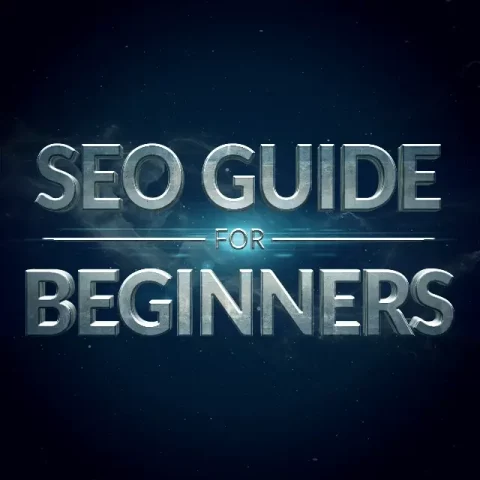
The internet is an intricate web of interconnected pages, and navigating through it requires the use of links. These links not only connect web pages but also provide valuable information to search engines about the content and relevance of the linked pages. One crucial element that search engines pay attention to when assessing the quality and relevance of a link is the anchor text.
In the realm of search engine optimization (SEO), knowing what is anchor text plays a vital role in understanding the visibility and ranking of a webpage. It is the clickable, visible text within a hyperlink that directs users to another web page. Anchor text provides context to both users and search engines about the content of the destination page. Understanding anchor text and its best practices is useful for website owners, content creators, and SEO professionals aiming to optimize their online presence.

Anchor Text Definition
Anchor text is a textual representation of a hyperlink. When creating a hyperlink, webmasters and content creators have the opportunity to choose the anchor text, which is typically displayed as underlined or differently colored text. The anchor text acts as a signpost, guiding users and search engines to relevant content.
Importance of Anchor Text
Knowing what is anchor text is can be of notable importance in the realm of SEO. Search engines use anchor text to determine the subject matter of the linked page and its relevance to the anchor text itself. By analyzing the anchor text used in backlinks, search engines can assess the credibility and authority of a webpage. A well-optimized anchor text can help improve a webpage’s visibility in search engine results pages (SERPs).
Types of Anchor Text
When it comes to anchor text, there are several types that serve different purposes. Let’s explore some common types of anchor text:
Exact Match Anchor Text
Exact match anchor text refers to using the target keyword or key phrase as the anchor text. For example, if the target keyword is “best running shoes,” the anchor text would be an exact match to that phrase. While this type of anchor text provides clear relevance, overuse can lead to negative SEO implications, such as keyword stuffing. This type of anchor text has been widely used in the past, but it’s not as effective as it used to be.
Exact match anchor text can trigger Google’s Penguin algorithm if used excessively or unnaturally. Overusing exact match anchor text can be a warning signal to search engines as it seems like aggressive and manipulative tactics.
Partial Match Anchor Text
Partial match anchor text includes a variation or a partial keyword match. It provides a slightly broader context while still maintaining relevance. For instance, instead of using “best running shoes,” a partial match anchor text could be “top-rated footwear for running enthusiasts.”
Branded Anchor Text
Branded anchor text involves using the brand name as the anchor text. It helps promote brand recognition and can be effective for building brand authority. An example of branded anchor text would be “Nike’s latest running shoe collection.”
Natural Anchor Text
Natural anchor text is when the anchor text is contextually relevant to the content surrounding it. For example, if you’re writing an article about SEO and you link to a page about SEO services, the natural anchor text could be ‘expert SEO services’ or ‘professional SEO services.’
This type of anchor text is highly effective as it’s more organic and comfortable in the user experience perspective. It requires effort to create quality content that naturally generates anchor text.
Naked URLs
Naked URLs refer to using the full URL as the anchor text, without any descriptive text. For example, “https://www.example.com” would be considered a naked URL anchor text. While naked URLs are concise, they provide little context for users or search engines.
Generic Anchor Text
Generic anchor text consists of non-descriptive phrases like “click here,” “learn more,” or “visit this page.” While these types of anchor text are easy to use, they offer limited SEO value and should be used sparingly.
Anchor Text Profile
Anchor text profile is an assortment of anchor text types using the primary keyword, synonyms variation, generic anchor text, branded anchor text, and long-tail keywords. An anchor text profile is in place to balance the diversity of the link profile, cover the semantic relevancy of the content, and avoid overly optimized anchors.
Best Practices for Building Anchor Text Links
To optimize anchor text effectively, it pays to follow some SEO best practices. Here are a few key considerations:
- Focus on Quality Links. Quality links refer to links coming from established domains with high authority, relevance and trust from their users. High-quality links, like those available with our Link Outreach service, have a substantial impact on your rankings. That said, not all links are valued the same. Spammy and low-quality links can negatively affect your site’s visibility in the search results, so it’s critical to focus on acquiring only high-quality links.
- Keep Your Anchor Text Relevant. Keeping your anchor text relevant to the linked page is what makes the anchor text effective. Relevance can come from your content topic and the user intent behind the search query. Don’t force keywords in your anchor text, as it can be negatively interpreted by search engines.
- Diversify Your Anchor Text Profile. Over-optimization occurs when a webpage uses excessive exact match anchor text. As mentioned earlier, an anchor text profile should have an assortment of different anchors. Use variations of your primary keyword and long-tail keywords, along with generic, branded and natural anchor texts. A diverse anchor text profile will appear more natural to Google and avoid over-optimization.
- Avoid Overusing Anchor Text. Avoid overusing anchor text in your content as it can negatively affect the overall user experience. Overuse can be a red flag for Google, which leads to your links getting devalued or penalized. Use a mix of natural anchor texts and branded links as much as possible.
- Monitor Your Anchor Text Profile. It’s essential to monitor your anchor text profile using tools like SEMrush or Ahrefs to check the variation of your anchor text. A balanced and diversified anchor text profile leads to a healthy link profile and helps to avoid Google penalty.
Tips for Anchor Text Optimization
To optimize anchor text for maximum impact, consider the following:
- Use descriptive words that accurately describe the page the link is pointing to. This will help search engines understand the context of the page and boost the page’s rankings.
- Use the targeted keyword phrase or related phrases in the anchor text to help boost the page’s rankings.
- Strike a balance between using targeted keyword phrases and descriptive words in order to avoid over-optimizing anchor text.
- Use a variety of anchor text types, such as branded and generic anchors, to make your link profile look more natural.
- Use different anchor text for internal and external links to avoid confusing search engine algorithms.
- Incorporate relevant keywords naturally within the anchor text.
- Avoid using excessively long anchor text, as concise and clear text tends to perform better.
- Ensure the anchor text is easily distinguishable from the surrounding content, making it clear that it is a clickable link.
Additional Resources
- Moz Keyword Explorer. A tool for finding the most relevant keywords for your content and anchor texts.
- Ahrefs. A tool for analyzing backlinks and anchor texts of your website and competitors.
- SEMrush. Comprehensive SEO tool that includes the analysis of anchor texts and backlinks.
- Cognitive SEO. Analyzing the anchor texts and backlink profiles of your website and competitors.
- Majestic. A tool for analyzing the link profile of your site, including anchor texts.
- Linkody. Monitoring your backlinks and anchor texts, as well as track competitor backlinks and anchor texts.
- Google Search Console. Formerly Google Webmaster Tools, this free tool from Google provides insights into your website’s performance, including anchor texts and internal linking.
- Small SEO Tools. A free tool that verifies the anchor texts of a particular web page.
- Yoast SEO Plugin. A popular WordPress plugin that includes an anchor text optimization feature.
- LinkMiner. A free Chrome extension that allows you to analyze the anchor texts of a website.
Final Takeaways
Anchor text serves as an essential element in SEO, providing context and relevance to both users and search engines. By understanding the different types of anchor text and following best practices, website owners and content creators can enhance their visibility, improve user experience, and bolster their SEO efforts.
Remember that quality links such as those gained with our Link Outreach service, in addition to relevant and varied anchor text, and monitoring your anchor text profile are the best ways to stay ahead of the curve in search engine optimization. When done right, building links with anchor text can significantly enhance your site’s visibility and attract relevant traffic to your website.















